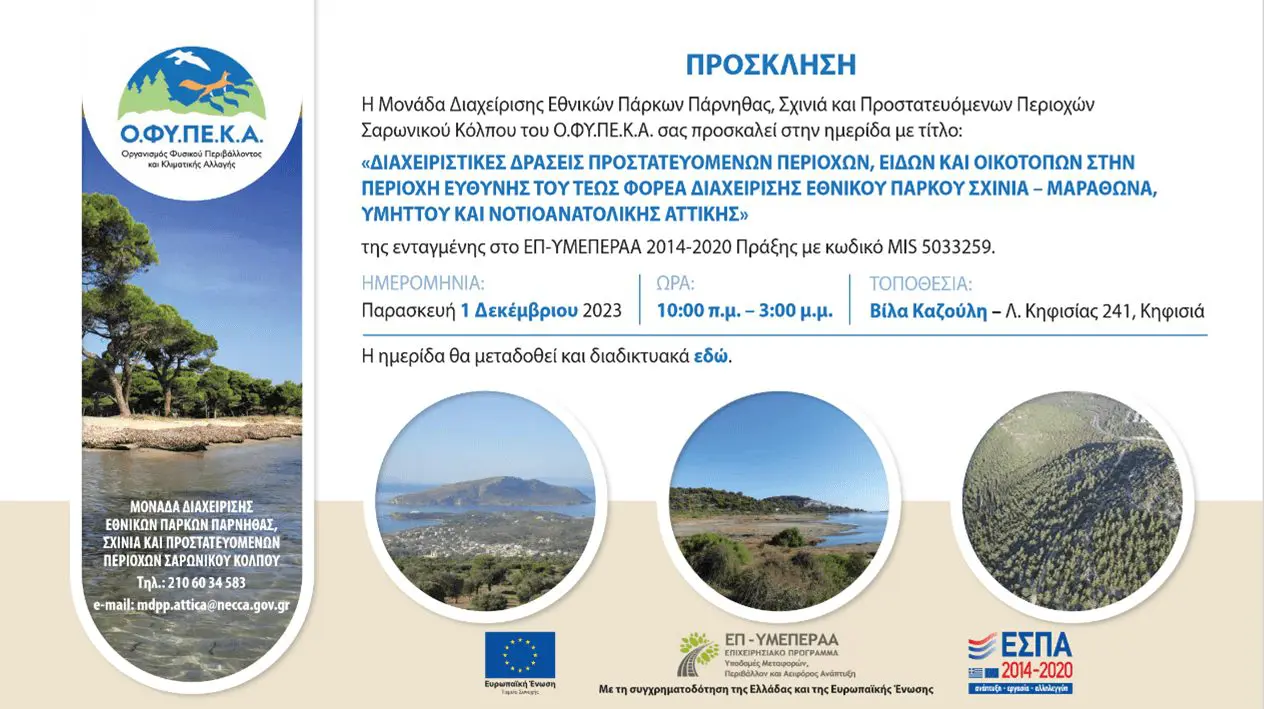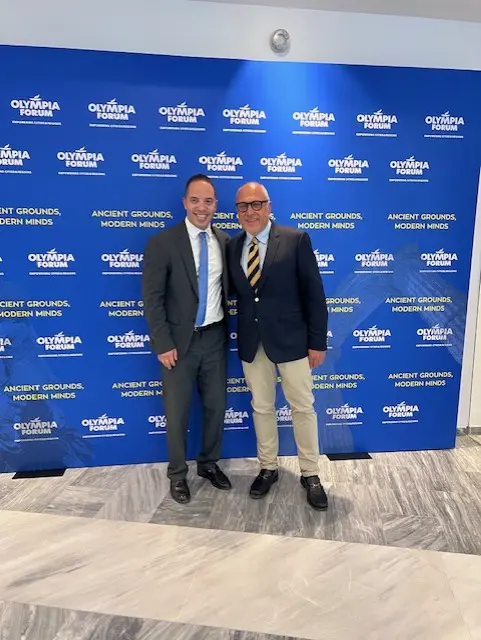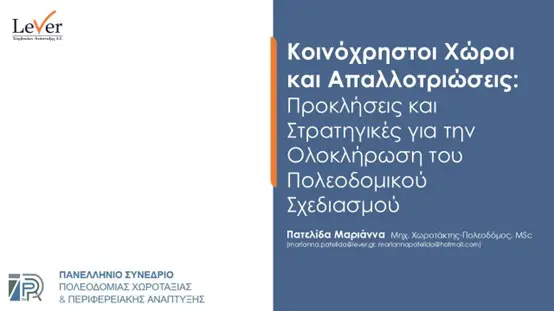As part of the project titled “Assessment of Visitor Numbers and Determination of Carrying Capacity in the Areas under the Responsibility of the Management Body of Schinias–Marathon National Park, Mount Hymettus and Southeastern Attica,” a workshop was held under the title: “Management Actions for Protected Areas, Species, and Habitats in the Area of Responsibility of the Former Management Body of Schinias–Marathon National Park, Mount Hymettus and Southeastern Attica.”
The company “Lever – Development Consultants S.A.”, a member of the “Samaras & Associates Group,” presented proposals for management and development measures for the protection and sustainable utilization of the areas managed by the Protected Areas Management Unit of Attica, under the Natural Environment and Climate Change Agency (N.E.C.C.A.).
The following study areas were highlighted in the presentation:
- Schinias–Marathon National Park (GR3000003)
- Vravrona – Coastal Marine Zone (GR3000004)
- Sounio – Patroklos Islet and Coastal Marine Zone (GR3000005)
- Mount Hymettus – Aesthetic Forest of Kaisariani – Lake Vouliagmeni (GR3000006)
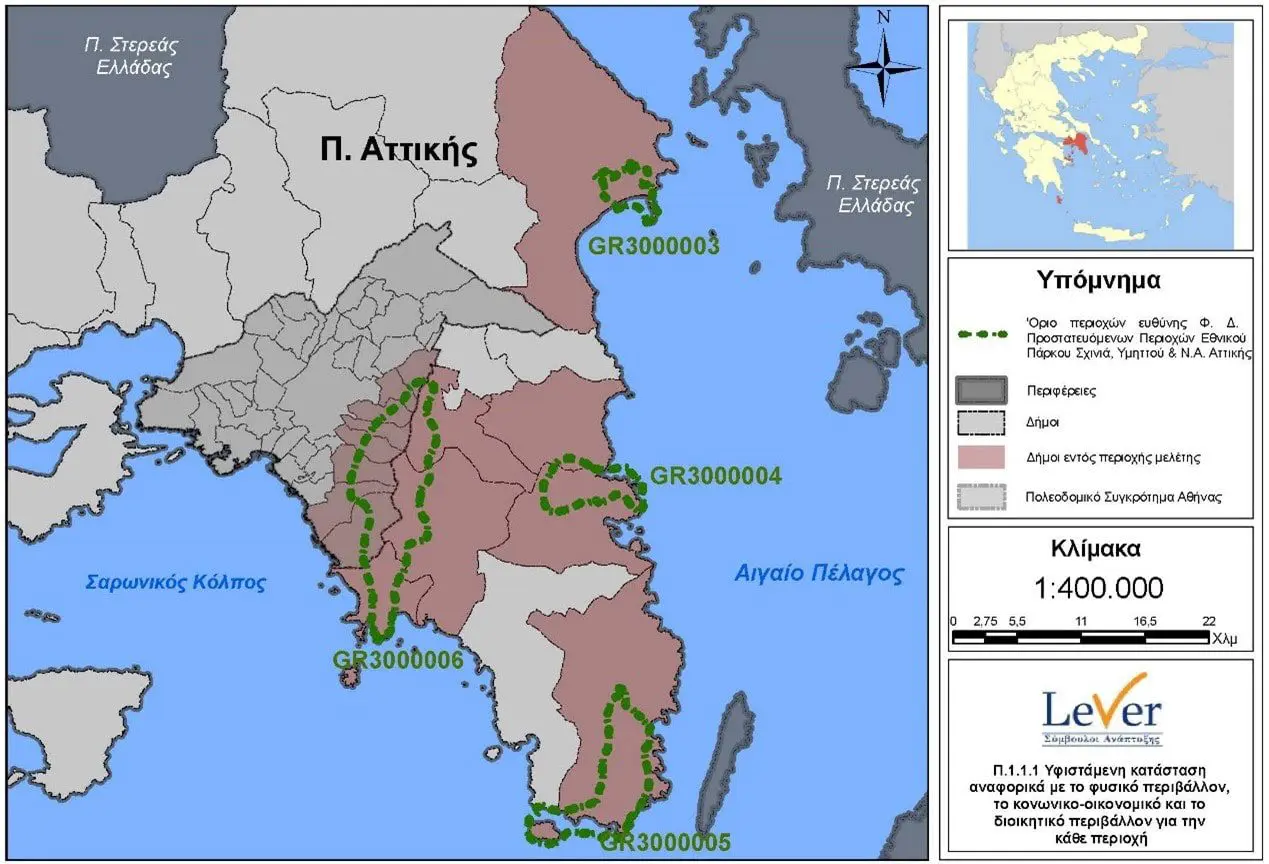
The presentation initially focused on the unique ecological features of each study area and described the most important natural characteristics and protected species, such as:
- The rich biodiversity of Schinias–Marathon National Park, which hosts more than 240 bird species and rare plant ecosystems, such as the Aleppo pine forest.
- The discovery of a new species of sea anemone, Paranemonia vouliagmeniensis (Doumenc et al., 1987), and the unique biotic environment of Lake Vouliagmeni.
- The complex geological and historical environment of the broader Sounio area.
- The Erasinos River, a small river with significant ecological importance in the Vravrona area.
- The Aesthetic Forest of Kaisariani, covering 3,000 stremmas, a valuable ecosystem for the residents of the Attica Basin.
- Mount Hymettus, which, despite its limited size, supports over 600 plant species and subspecies, and is characterized by high geo-diversity, including important karst caves such as Nymfoliptos and Sykia caves.
The environmental pressures faced by these areas, particularly those caused by visitors, were thoroughly examined. The assessment was based on field visits, scientific literature reviews, and consultations with experts and institutions experienced in the regions under study.
Based on the pressures identified, the presentation proposed tailored management and development measures for each study area, grouped into the following focus areas:
Visitor Numbers and Categories
It was recognized that the carrying capacity of each area is closely tied to its sustainability. High visitor numbers—particularly in areas like Lake Vouliagmeni, Kaisariani Forest, and Schinias—exert intense pressure on local ecosystems.
Visitor type also matters significantly; even small numbers of poorly informed visitors can cause substantial ecological damage. Therefore, specific visitor control measures were proposed where necessary, along with recommendations to prevent harmful practices by uninformed or rule-breaking visitors.
Infrastructure (Special Pathways, Accessibility for Disabled People)
The need for the maintenance or construction of special paths and accessible infrastructure (for people with disabilities) was emphasized. These projects also include waste management and reflect a broader cultural responsibility.
Public Awareness and Environmental Education
Raising public environmental awareness benefits society as a whole. Informing the public about these study areas helps highlight their ecological significance and promote further awareness.
Special Walking Routes (Geo-routes, Thematic Trails)
The need to design thematic walking trails was identified. These Thematic Routes would help highlight and protect the areas by guiding visitors along specific paths, limiting their movement and impact across the wider ecosystem.
Management Practices (Supervision, Utilization Methods)
Current management and supervision practices were evaluated, and alternative practices were proposed that would be less harmful to the ecosystems under study.
Scientific Monitoring (Educational and Research Institutions)
Scientific monitoring of both the areas and protected species, especially in locations facing significant pressures, is crucial. For example, it was proposed to conduct biological monitoring of Paranemonia vouliagmeniensis in Lake Vouliagmeni every five years, to reassess management measures and make science-based decisions depending on the species’ conservation status.
Restoration of Natural Environments
Cases were identified where the natural environment had been disrupted by unauthorized constructions or the accumulation of inert materials. Restoration of these areas was deemed necessary.
Surveillance (Technological Tools, Increased Monitoring, Fire Protection)
In many areas, surveillance was found lacking. Proposals were made to increase staffing, introduce technological surveillance systems, and provide protection for specific vulnerable zones currently unguarded. Enhanced fire protection and the use of specialized technologies were also proposed.
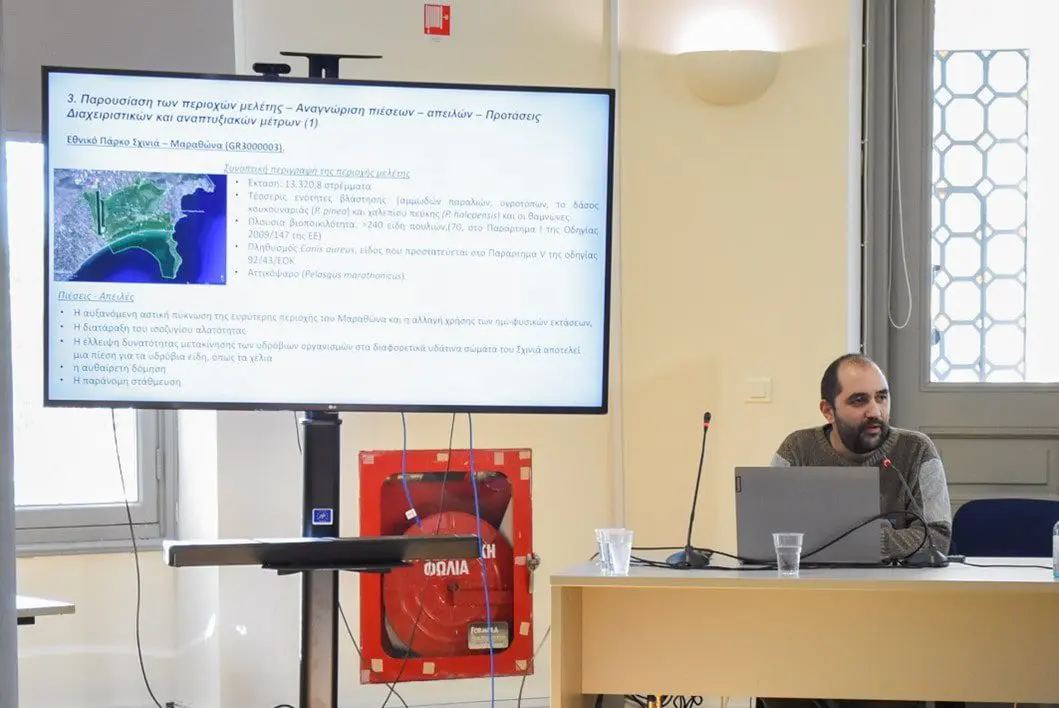
The measures presented aim to protect and enhance the study areas while ensuring socially fair access and use. The workshop also highlighted the need for further scientific research and ecological monitoring.
Throughout the three-year duration of the project, Lever – Development Consultants S.A. made significant contributions to identifying the above challenges and shaping concrete proposals for addressing them. The overall goal of these measures is to create the conditions that will allow these areas to benefit the local economy and society, under a framework of proper and sustainable management.



